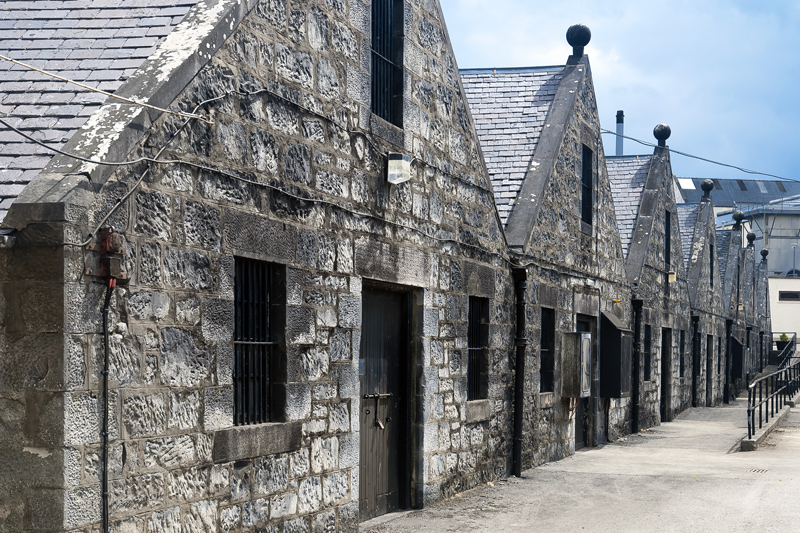Brora
2016-08-03
 Brora in a nutshell:
Brora in a nutshell:founded: 1819 (closed in 1983)
owner: Diageo
region: Highlands
location: 58° 01’ 30.5” N 03° 52’ 07.5” W
status: closed
capacity: -
washbacks: -
stills: 2
source of water: Clynemilton Burn
tours: no
Brora
The Brora distillery was not always called so. Founded in 1819, the plant was called Clynelish, however the 19th century Clynelish is not the same Clynelish as we know it today. What is more, the spirit produced at the original Clynelish distillery had very little in common with the peat monster that managed to conquer the hearts of whisky aficionados at the turn of the 20th and 21st century, and whose cult is still alive and well. First things first then.
In 1819, the Marquis of Stafford, an ill-famed landowner, founded a whisky distillery near the town of Brora, and named it Clynelish. The plant operated more or less uninterruptedly for most of the 19th century, despite ownership changes or the fact that the company running it went bust in 1827. In 1912 some of the shares were taken over by Distillers Company Limited, and in 1925 Clynelish became DCL’s property in its entirety. In 1930 DCL took over Scottish Malt Distillers, and a year later Clynelish gets mothballed. DCL/SMD is – putting it rather simply – more or less what we now know as Diageo, so one could say that the distillery has remained under the same owner for over 80 years now. Production at Clynelish was resumed in 1939. In 1965 the local maltings were decommissioned.
The complicated Clynelish/Brora puzzle began in 1967, when a new distillery was built right next to the old one. The new plant was also called Clynelish. Both of them operated alongside one another for about a year, after which the old plant was closed down. Until that point, both distilleries had been producing lightly peated malt, similar in character to what we now know as Clynelish single malt whisky.
The situation might have never changed, the new Clynelish would have been operating normally and the old one decaying in its shade, had it not been for severe shortages of water on the island of Islay in 1968. As a result, the Port Ellen distillery, operating on Islay, was unable to produce enough peated whisky for the needs of Johnnie Walker and other DCL blends. A decision was made to reopen the old Clynelish distillery and experiment with distilling highly peated whisky here. Such a solution could also result in lower costs of transport, as it turned out. And it so happened that the old Clynelish was reopened in 1969. The peat experiment turned out to be successful, the demands for peated whisky were met again. So much so, that DCL was able to close down Caol Ila on Islay in the years 1972-74 and perform major reconstruction work on the site – thanks to the old Clynelish there was plenty of peated spirit for the needs of Johnnie Walker blending. It was only in 1975, as a result of new regulations banning giving the same name to two different plants, the name of the old Clynelish was changed to Brora – after the name of the nearby town.
The fact that at its final stages of operation Brora acted as a kind of spare distillery was reflected in the various peating levels of the spirit made there – Brora produced exactly that kind of whisky which was currently needed for the company’s blending purposes. And so, at the first stage it produced highly peated spirit. In the mid-1970s the peating levels were dropped considerably, but then there are 1980s expressions which will satisfy the most peat-demanding whisky enthusiasts ever.
Taking into account the cult status that Brora and its whiskies are enjoying at the moment, it is hard to believe that the distillery’s adventure with highly-peated malt lasted just over two decades. In March 1983, as a result of unfavourable results of DCL’s accountants’ calculations, Brora distillery was finally closed down. Its buildings remain, however, including traditional dunnage warehouses, used now by Clynelish.
In 1995, the first official Brora single malt was released under Diageo’s Rare Malts series, and since 2002 there are annual limited releases, under the Special Releases series. Quite numerous independent bottlings of Brora are also kept in high esteem by whisky enthusiasts.
Show more entries from
August 2016